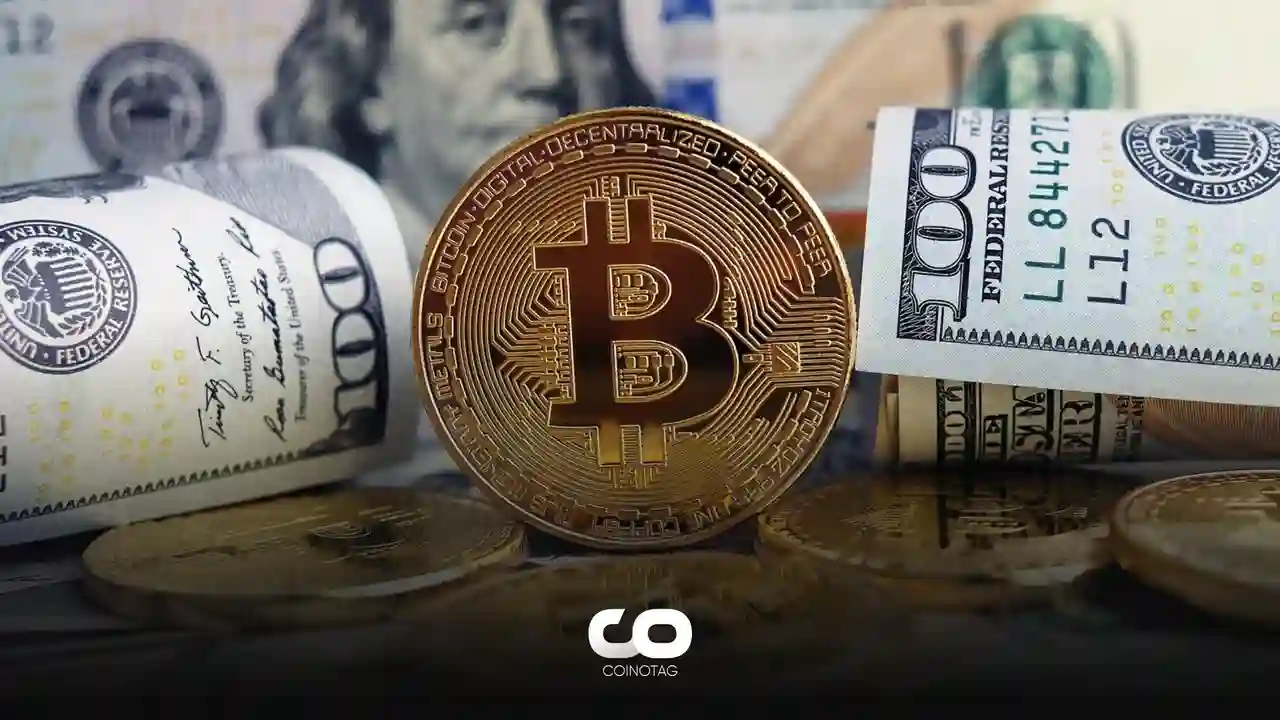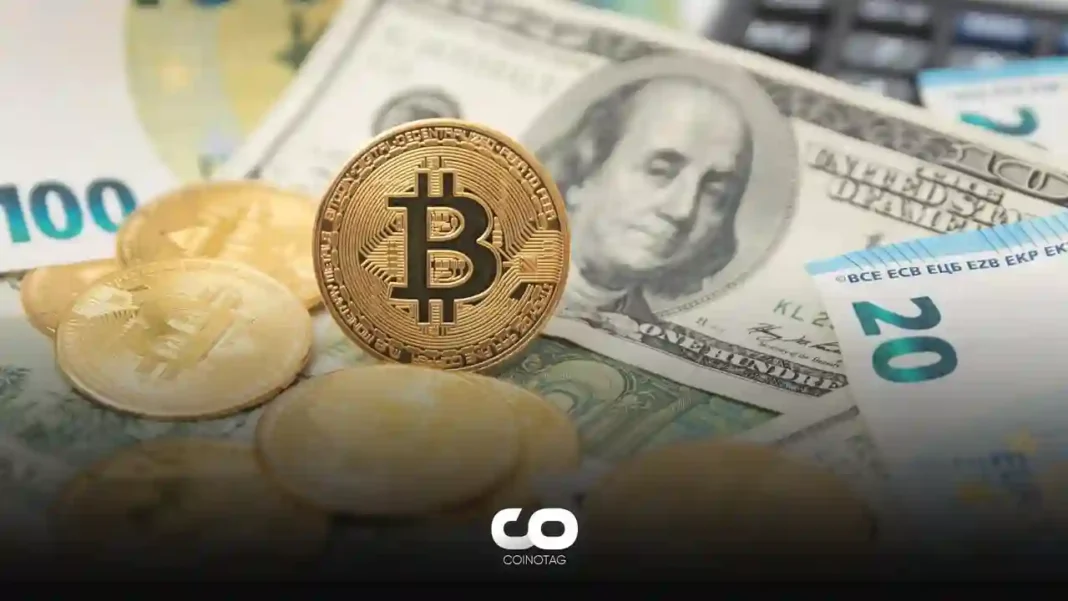| COINOTAG recommends • Exchange signup |
| 💹 Trade with pro tools |
| Fast execution, robust charts, clean risk controls. |
| 👉 Open account → |
| COINOTAG recommends • Exchange signup |
| 🚀 Smooth orders, clear control |
| Advanced order types and market depth in one view. |
| 👉 Create account → |
| COINOTAG recommends • Exchange signup |
| 📈 Clarity in volatile markets |
| Plan entries & exits, manage positions with discipline. |
| 👉 Sign up → |
| COINOTAG recommends • Exchange signup |
| ⚡ Speed, depth, reliability |
| Execute confidently when timing matters. |
| 👉 Open account → |
| COINOTAG recommends • Exchange signup |
| 🧭 A focused workflow for traders |
| Alerts, watchlists, and a repeatable process. |
| 👉 Get started → |
| COINOTAG recommends • Exchange signup |
| ✅ Data‑driven decisions |
| Focus on process—not noise. |
| 👉 Sign up → |
- Digital assets continue to face pressure from rising bond yields as investors contemplate interest rates and the outlook for Federal Reserve monetary policy.
- Bitcoin experienced a drop around September 19th, trading at around $27,200 before the Fed’s decision on interest rates and the summary of economic projections, or the “dot plot.”
- A stronger dollar and high yields on risk-free U.S. Treasury bonds do not encourage investors to venture into riskier bets like Bitcoin.
Continued Contemplation of Fed’s Monetary Policy and rising U.S. Treasury yields on Tuesday kept Bitcoin under pressure.
Bitcoin Prices Remain Under Pressure on Tuesday

Bitcoin and other cryptocurrencies rose on Tuesday, but, like the stock market, digital assets continue to face pressure from rising bond yields as investors contemplate interest rates and the outlook for Federal Reserve monetary policy.
Bitcoin’s price increased by less than 1% in the past 24 hours, reaching $26,250, and the largest cryptocurrency has remained below $26,000 for the past month, in a range dominated by historically low volatility and trading activity. Bitcoin dropped around September 19th, trading at around $27,200, and soaring U.S. Treasury yields raised concerns.
| COINOTAG recommends • Professional traders group |
| 💎 Join a professional trading community |
| Work with senior traders, research‑backed setups, and risk‑first frameworks. |
| 👉 Join the group → |
| COINOTAG recommends • Professional traders group |
| 📊 Transparent performance, real process |
| Spot strategies with documented months of triple‑digit runs during strong trends; futures plans use defined R:R and sizing. |
| 👉 Get access → |
| COINOTAG recommends • Professional traders group |
| 🧭 Research → Plan → Execute |
| Daily levels, watchlists, and post‑trade reviews to build consistency. |
| 👉 Join now → |
| COINOTAG recommends • Professional traders group |
| 🛡️ Risk comes first |
| Sizing methods, invalidation rules, and R‑multiples baked into every plan. |
| 👉 Start today → |
| COINOTAG recommends • Professional traders group |
| 🧠 Learn the “why” behind each trade |
| Live breakdowns, playbooks, and framework‑first education. |
| 👉 Join the group → |
| COINOTAG recommends • Professional traders group |
| 🚀 Insider • APEX • INNER CIRCLE |
| Choose the depth you need—tools, coaching, and member rooms. |
| 👉 Explore tiers → |
Hani Abuagla, an analyst at brokerage firm XTB, said, “Weakness in global stock markets and pressure from a strong dollar and rising yields making riskier assets less attractive continue to weigh on the cryptocurrency market.”
A strong U.S. dollar and high bond yields, such as the Dow Jones Industrial Average and S&P 500, are bad news for Bitcoin. A more appealing U.S. dollar and high returns on risk-free U.S. Treasury bonds do not encourage investors to venture into riskier bets like Bitcoin. In recent days, bond yields jumped to levels not seen in over a decade in response to the latest messages from the Fed, suggesting that borrowing costs may stay higher than previously thought.
| COINOTAG recommends • Exchange signup |
| 📈 Clear interface, precise orders |
| Sharp entries & exits with actionable alerts. |
| 👉 Create free account → |
| COINOTAG recommends • Exchange signup |
| 🧠 Smarter tools. Better decisions. |
| Depth analytics and risk features in one view. |
| 👉 Sign up → |
| COINOTAG recommends • Exchange signup |
| 🎯 Take control of entries & exits |
| Set alerts, define stops, execute consistently. |
| 👉 Open account → |
| COINOTAG recommends • Exchange signup |
| 🛠️ From idea to execution |
| Turn setups into plans with practical order types. |
| 👉 Join now → |
| COINOTAG recommends • Exchange signup |
| 📋 Trade your plan |
| Watchlists and routing that support focus. |
| 👉 Get started → |
| COINOTAG recommends • Exchange signup |
| 📊 Precision without the noise |
| Data‑first workflows for active traders. |
| 👉 Sign up → |
Low Volumes Amplify the Pressure
Macroeconomic challenges, the summer slowdown, and the characteristic volatility of trading volumes – which have attracted investors in the past – have pushed cryptocurrencies to record lows.
Given the absence of significant catalysts for cryptocurrencies, there seems to be little reason to expect Bitcoin to break out of its recent boring period anytime soon. The planned change in Bitcoin’s supply, known as the “halving,” is scheduled for next year, and the SEC’s decision on spot Bitcoin exchange-traded funds is likely months away.
| COINOTAG recommends • Traders club |
| ⚡ Futures with discipline |
| Defined R:R, pre‑set invalidation, execution checklists. |
| 👉 Join the club → |
| COINOTAG recommends • Traders club |
| 🎯 Spot strategies that compound |
| Momentum & accumulation frameworks managed with clear risk. |
| 👉 Get access → |
| COINOTAG recommends • Traders club |
| 🏛️ APEX tier for serious traders |
| Deep dives, analyst Q&A, and accountability sprints. |
| 👉 Explore APEX → |
| COINOTAG recommends • Traders club |
| 📈 Real‑time market structure |
| Key levels, liquidity zones, and actionable context. |
| 👉 Join now → |
| COINOTAG recommends • Traders club |
| 🔔 Smart alerts, not noise |
| Context‑rich notifications tied to plans and risk—never hype. |
| 👉 Get access → |
| COINOTAG recommends • Traders club |
| 🤝 Peer review & coaching |
| Hands‑on feedback that sharpens execution and risk control. |
| 👉 Join the club → |
Matteo Greco, an analyst at digital asset investment group Fineqia, said, “Despite the end of the summer season and the expected restart of typical trading activities, volumes in the digital asset market remain low, both on centralized exchanges and on-chain.” He added:
“Central banks, particularly policies implemented by the Federal Reserve, have redirected capital to less risky investments like government bonds.”
Beyond Bitcoin, Ether, the second-largest cryptocurrency, rose by less than 1% to $1,590. Smaller tokens or altcoins also saw gains, with Cardano rising by less than 1% and Polygon increasing by more than 2%. Memecoins, on the other hand, had a quieter appearance, with Dogecoin and Shiba Inu both trading almost flat.
| COINOTAG recommends • Members‑only research |
| 📌 Curated setups, clearly explained |
| Entry, invalidation, targets, and R:R defined before execution. |
| 👉 Get access → |
| COINOTAG recommends • Members‑only research |
| 🧠 Data‑led decision making |
| Technical + flow + context synthesized into actionable plans. |
| 👉 Join now → |
| COINOTAG recommends • Members‑only research |
| 🧱 Consistency over hype |
| Repeatable rules, realistic expectations, and a calmer mindset. |
| 👉 Get access → |
| COINOTAG recommends • Members‑only research |
| 🕒 Patience is an edge |
| Wait for confirmation and manage risk with checklists. |
| 👉 Join now → |
| COINOTAG recommends • Members‑only research |
| 💼 Professional mentorship |
| Guidance from seasoned traders and structured feedback loops. |
| 👉 Get access → |
| COINOTAG recommends • Members‑only research |
| 🧮 Track • Review • Improve |
| Documented PnL tracking and post‑mortems to accelerate learning. |
| 👉 Join now → |








